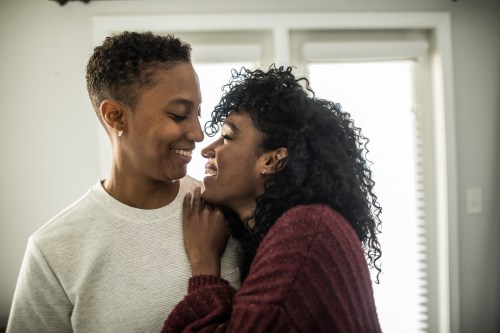Many understand sexual orientation to be the term that describes who a person is attracted to, in terms of gender and sexual identity. But, it’s possible that sexual desire and romantic desire won’t line up, which is why it’s important to understand sexual orientation and romantic orientation as separate entities. The differences help to explain why a person might gravitate to one person for an amorous experience and another person for a sexual one.
Experts in This Article
sex educator and owner of Early to Bed
That is, some people may be sexually attracted to people of a certain or multiple genders, but they’re only romantically interested in another. And just like there are multiple types of sexuality, there are at least eight identifiable romantic orientations: aromantic, biromantic, heteroromantic, homoromantic, panromantic, polyromantic, grayromantic and demiromantic.
“Sexual orientation is about who you want to sleep with. This can feel like more of a physical sensation than a romance. Romantic orientation, on the other hand, is about who you want to be affectionate with or even fall in love with,” says Searah Deysach, sex educator and owner of feminist sex shop Early to Bed. “Some people think that these two orientations are one and the same, but it’s not for folks who have a mixed orientation.”
“Sexual orientation is about who you want to sleep with. Romantic orientation is about who you want to be affectionate with or even fall in love with.” —sex educator Searah Deysach
For example, let’s say a woman is sexually attracted to people who identify as men and women and identifies as bisexual. But when it comes down to romantic relationships, she really doesn’t have the same desire to actually partner up with a man. Her preference for love and dating is exclusively women, so she might identify as homoromantic. Similarly, those whose sexual preferences align with fraysexuality, or the sexual attraction toward strangers, might still feel the desire to have a romantic relationship with someone they know very well.
“Knowing whether or not your sexual and romantic orientations align can be part of your journey to truly understand yourself,” Deysach says. “If you’re dating, it can help you figure out who you are looking for in a long-term partner versus someone you might just be interested in on a physical level. It can help you better understand why you are—or are not—‘feeling it’ with someone sometimes, too.”
Understanding your own romantic orientation isn’t just powerful for yourself, though—it also can provide value for future partners. Sharing your romantic orientation on your dating profile (or to a new love interest or flame) means all parties involved can have a clearer idea of who you are, and what bond you’re really seeking.
“As with most things around sex and relationships, knowing and accepting yourself for what you need and want is the first step to being able to share your body and your love with others,” Deysach says. “Being open and honest with any romantic or sexual partner can help everyone enter the relationship with their eyes open and their expectations aligned.”
As a structure, romantic orientations are meant to help facilitate deeper personal understanding to strengthen your relationships with yourself and others. But if they don’t resonate with you, get in the way of how you define yourself, or feel too rigid or limiting, simply ignore them. If you feel that knowing your romantic orientation may bring dimension to your love life and identity, though, check out the list below for non-exhaustive list of the types below.
Different romantic orientation types
1. Aromantic
Aromantic individuals don’t experience romantic attraction toward individuals of any genders. You might still have sexual needs, but not romantic feelings towards any given person.
2. Biromantic
With the root “bi,” meaning “two,” biromantic refers to being romantically attracted to those who identify as men and women.
3. Heteroromantic
Heteroromantic folks are romantically attracted toward people who identify as the opposite gender to their own.
4. Homoromantic
Homoromantic refers to those who are romantically attracted to people who identify as the same gender.
5. Panromantic
Panromantic people are those who are attracted to people of every gender. For people who identify as panromantic, gender doesn’t really factor into whom they fall in love with.
6. Polyromantic
Polyromantic folks may have a romantic attraction to multiple, but not necessarily all genders. This categorization leaves room for more gender identities, beyond male or female.
7. Greyromantic
A greyromantic orientation refers to those who fall on the spectrum between aromantic and, well, romantic. It mainly suggests someone who has had infrequent romantic attraction or very weak romantic attraction to other people. It can be an identifier on its own, or it can be used with another romantic orientation. For example, if a woman has a waned, barely palpable interest in men, then she’d be hetero-greyromantic.
8. Demiromantic
Demiromantic refers to someone who doesn’t experience a romantic attraction unless they’ve already formed a close emotional bond with someone. Like greyromantic folks, this term can be used by itself, or it can be a hyphenate with another romantic orientation.
Sign Up for Our Daily Newsletter
Get all the latest in wellness, trends, food, fitness, beauty, and more delivered right to your inbox.
Got it, you've been added to our email list.











